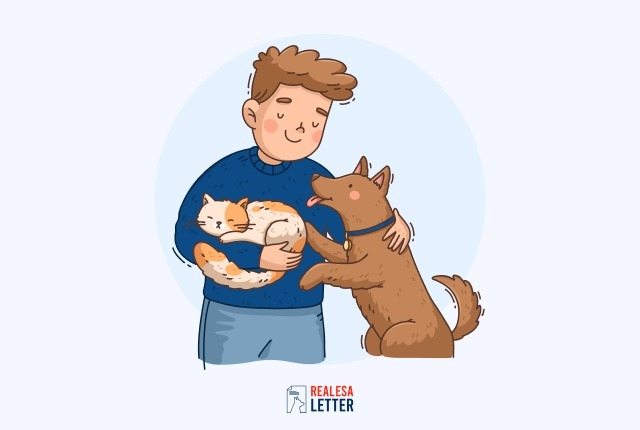You love your dog and feel more peaceful with them around, but your landlord has a no-pets policy, and travel and housing rules are confusing nowadays.
Without the right documentation, you could face denied housing, extra fees, or inconsistent treatment, even when your need is real.
Below, you’ll find a clear, US-specific, step-by-step guide on how to make your dog an ESA. What counts, what doesn’t, and how to do it the right way.
What is an Emotional Support Dog: A Brief Overview
An emotional support dog is a companion animal that helps cope with at least one effect of a person’s mental health disability. It is often anxiety, depression, PTSD, or similar conditions, particularly in housing settings governed by federal law.
Under HUD’s guidance for the Fair Housing Act (FHA), emotional support animals or dogs are considered “assistance animals,” not pets, when there’s a disability-related need. That means they can be a basis for a reasonable accommodation in housing.
While there’s no single breed list, people often choose calm, people-oriented breeds, sometimes called the best emotional support dogs for temperament, based on fit with their lifestyle.
Examples include:
- Labrador Retriever
- Golden Retriever
- Poodle (including mixes)
- Cavalier King Charles Spaniel
- Corgi (Pembroke Welsh or Cardigan)
- And, mixed-breed shelter dogs with steady, gentle temperaments
How To Make My Dog An ESA Dog
In U.S. housing, making your dog an ESA is actually about you. What we are trying to say is documenting your disability-related need for the animal with proper clinical support. There is no federal registry you must join, and no special training is required for ESAs in housing.
Depending on your treatment plan, you can even have as many ESAs as you need, as long as each one is properly documented by a licensed mental health professional.
Diagnose with a Mental Health Condition
To qualify for an ESA letter, you have a qualifying disability and a disability-related need for the animal, as determined by a licensed professional. In plain terms, your dog must help cure at least one effect of your condition in a meaningful way in your home life.
Consult with a Licensed Mental Health Professional (LMHP)
Get in touch with an LMHP who can write an ESA letter. A licensed health care professional with personal knowledge of your condition, such as a psychologist, psychiatrist, licensed clinical social worker, professional counselor, or certain nurse practitioners, can provide valid documentation.
HUD warns that generic documents sold online without a real clinical relationship are usually insufficient, but also notes that many legitimate providers deliver care via telehealth. Licensure must align with where you reside.
Get a Legitimate ESA Letter
Your ESA letter should state (in the provider’s own words) that you have a disability under federal law. Besides, your companion dog helps alleviate at least one effect of that condition, along with the provider’s name, license, contact, jurisdiction, and date. To avoid issues, renew your ESA letter every year, as many landlords prefer recent paperwork.
It does not need to reveal your diagnosis or detailed records, and it does not require any registration number.
Ask to see a sample ESA letter before your appointment so you know what information typically appears and what doesn’t (e.g., no diagnosis details).
Review Applicable Local Laws & Regulations
- Housing Law (FHA): When your need isn’t obvious, a housing provider or landlord may request reliable documentation from your clinician. If your letter is approved, they generally cannot charge pet fees or deposits for ESAs, though you’re responsible for any damage to the property.
- Public Places Law (ADA): ESA dogs don’t have the same public-access rights as trained service dogs. Businesses can treat them as pets.
- Air Travel Law (ACAA): Airlines no longer recognize ESAs as service animals. They may transport them as pets under their policies and fees.
- State Law: Some states (e.g., Florida) penalize false ESA documentation and require clinicians to have personal knowledge of the patient. Misrepresentation carries heavy fines or serious charges.
Get in Touch with RealESALetter
If you don’t have an LMHP already, connect with our reputable service. It matches you to licensed U.S. providers who practice in your state, conduct a real evaluation, and issue documentation that aligns with emotional support animal laws.
Make sure you can verify the clinician’s license and that you’ll have the opportunity to ask questions about your ESA letter.
Who is Eligible for an ESA Dog: Understanding the Criteria
Eligibility relies on whether you have a qualifying disability and a disability-related need for the animal, as determined by a licensed professional. In plain terms, your dog must help cure at least one effect of your condition in a meaningful way in your home life.
Common mental health conditions that may qualify (as clinically determined):
How Much Does it Cost to Make Your Dog an ESA
There is no government fee to register an ESA because there is no federal registry. The emotional support animal cost typically includes:
(1) your clinical evaluation/letter fee (varies by provider), and
(2) any standard housing costs you’d pay regardless of pet status.
Under HUD’s FHA guidance, when your request is acknowledged, housing providers generally may not charge pet fees, pet rent, or pet deposits for assistance animals. Although you remain liable for actual damage to the rental property by your animal.
How Long Does it Take to Make Your Dog an ESA
Timeframes depend on scheduling and your clinician’s evaluation. There’s no required training period for ESAs in housing; what matters is proper documentation of your disability-related need.
After you submit your letter, HUD encourages landlords to decide promptly on reasonable accommodation requests (many adopt ~10 days as a best-practice window), but the exact timing can vary by provider and circumstances.
How Your ESA Dog Can Make Life Easier: Key Benefits Explained
An ESA can support daily life in practical, evidence-informed ways at home:
- Emotional Regulation:Emotional support animals for anxiety can help greatly with intrusive thoughts, or low mood.
- Routine & Structure: Feeding, walking, and care tasks add healthy daily rhythms.
- Sleep & Grounding: Physical proximity can ease nighttime hyperarousal or loneliness.
- Motivation & Activity: Short walks or play can gently increase movement and daylight exposure.
- Social Connection: Dogs can be “ice-breakers,” easing isolation and encouraging supportive interactions.
- Crisis Buffering: During difficult moments, focusing on the dog’s needs can reduce spirals and support coping skills.
To Sum Up,
Turning your dog into an ESA for housing is straightforward when you follow the law. Meet with a licensed professional, document your disability-related need with a legitimate letter, and share it with your housing provider. Skip “registries” and look-alike certificates; they’re not reliable under HUD’s standards.
If you’re ready to move forward, RealESALetter.com can connect you with licensed U.S. clinicians who understand federal ESA laws and will evaluate your situation appropriately.
Get your questions answered, review a sample ESA letter from a primary care physician (PCP), and take the next step with confidence. Because your well-being matters!
Pricing
PSD Letter
Reviews
ESA By States
ESA Laws
Resources




